|
"A Gift" is something given without expectation of
payment.
It is intended to be free of encumbrance.
It can be an expression of love or friendship,
gratitude, charity, aid - or simply "celebration".
At Christmas, gifts recall the Frankincense, Gold
and Myrrh brought by Wise Men from the East.
Gifts also regenerate the warmth and affection of
the spirit in which they are given -
something equally treasured.
The following are a few of our favorite
"anticipations",
all suitable for "the very special gift"
- all small and easily shipped.
We would like to show you more; however technology
does limit email space.
You may always visit the
full website for additional fine and unusual
"anticipations".
|
|
|
|
THE SPOON :
|
|
|
|
|
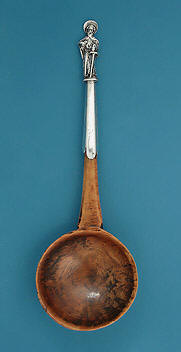 |
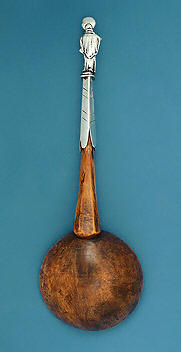 |
|
Rare Silver-Mounted Burr
Maple Apostle Spoon
St. Paul, Swiss / German, c1600-1650
with a deep round wooden bowl and tapering faceted wooden stem,
the pentagonal silver collar
having a
finial of St. Paul, holding a Bible and long sword,
(the sword an emblem of martyrdom and "the good fight"),
6.75" Long
|
|
|
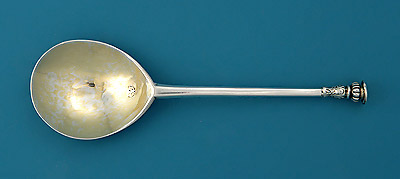 |
|
James I Provincial Silver Seal Top Spoon
Bristol, c1610
the Seal pricked
'1612'
Marked with a fleur de lys and 4
pellets to the bowl
& an incuse reversed R sided by two
five-petaled roses to the shaft
6-3/8" Long / 1.4 oz.
|
|
|
EARLY-SPOON COLLECTING :
For those of you
unfamiliar with early-spoon collecting, this 'addiction' may
seem rather mundane.
However...there
really are a few aspects to consider.
Until c1700,
most people had only one spoon, given to them at birth.
And that
spoon "traveled" with them throughout their lives -
sometimes
just through a slit in a hat.
The personal spoon
endured questionable hygiene, rough portage
(foot, cart or carriage,
horseback, maybe ship) and doubtless
much unsavory food.
Each spoon
thereby carries
with it an unwritten diary of its owner's life - beit long
or short.
It just
might be the most personal item you can own from the past.
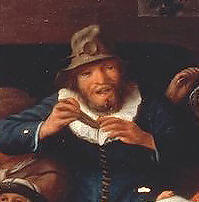 |
|
|
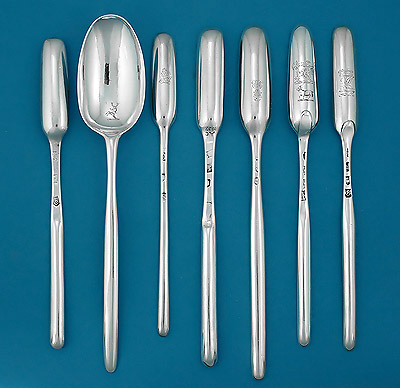 |
|
MARROW SCOOPS : A Collection from Queen Anne to George III
Roasted bone marrow was considered a great delicacy
during the Queen Anne period,
when meat was quite expensive.
To accommodate the extraction of the marrow from the
bone centers, silver spoons
with a long narrow scoop at one end were used,
followed by scoops on both ends.
The earliest
marrow spoons on record dates c1690.
These scoops
date from 1712 (Queen Anne) to 1762 (early George III).
Today the
delicacy has regained great popularity, and these spoons are
ready for use.
|
|
|
THE BOX : |
|
|
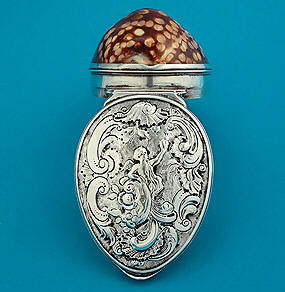 |
|
|
|
George II Silver-Mounted Cowrie
Shell Snuff Box
Jacobite Interest, with winged
putti holding the flaming heart
William Hutchison II, London, c1736
The "flaming heart"
is recorded as a
visual image for Jacobite propaganda :
Jacobitism and the
English People 1688-1788)
Gilt Interior / 2.75" Long
|
|
| |
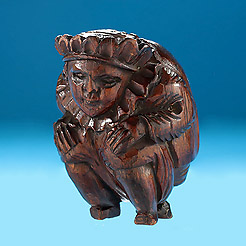 |
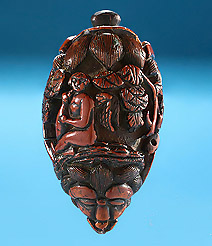 |
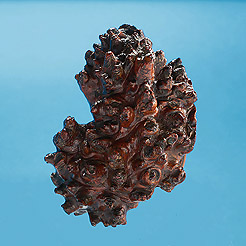 |
| |
|
|
|
Carved Crowned Hunchback Fruitwood Snuffbox, Late 18th Century
The crowned crouching hunchback with
tilt
& turn of the head to the left, wearing a ruff,
sliding cover
verso and plug below
(Possibly representing Richard III)
Ref : Treen & Other Wooden Bygones,
2.75" High
|
Well Carved Coquilla Nut "Bugbear" Snuff Flask
19th c, Probably France
An seated angel being kissed by a hound to one side,
the other with a musical medallion, all among
fruiting
trees
Ref : Treen & Other Wooden Bygones
3.5" Long
|
Scottish Burr Elm Root Snuff Mull
Early19th Century
With hinged bottom cover, the interior inscribed
for "George Sinclair",
possibly the 19th century
contemporary Scottish horticulturist
of that name
.5" Long x 1.5" High
|
|
|
|
|
|
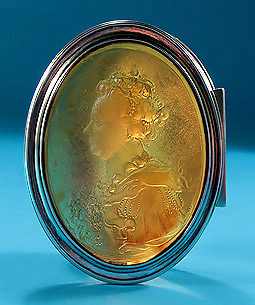 |
|
|
|
Rare Queen Anne / George I Blonde Tortoiseshell & Silver Snuff Box
John Obrisset, Signed OB, England, c1714-20,
the silver
illegibly marked to the box interior;
Portrait of Queen Anne, after the medal by John Croker
Blonde tortoiseshell boxes are rare by Obrisset.
An example by Obrisset of Charles I is in the collection
of the V&A, no. M.364-1921
3" Long x 2.25" Deep x .75" High
|
|
|
|

Victorian Highly Chased Large Silver Scent Flask
Rosenthal and Jacob, London, 1890
Chased in the Dutch genre manner of painter David Teniers the Younger (1610-90),
each side with descending vignettes; crisp marks on both body and cover
10.25" Long / 2.5 oz.
|
|
|
THE CERAMIC :
|
|
|
Chinese Export : |
|
|
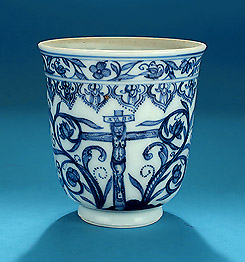 |
|
|
|
Rare Kangxi Chinese Export
Blue & White Porcelain
Crucifixion Beaker
China, c1690
Each side painted with a detailed scene
of the Crucifixion beneath a plaque inscribed 'INRI'
the eyes and nose of dotted drawing, each Cross flanked by long
elaborate curing leafy scrolls
with two as upward facing flowerheads (possibly a lily).
Particularly close, in the choice of motifs and the technique, are
pillow and book covers
made in England the mid-17th century, as shown below
(The
Metropolitan Museum of Art)
3" High
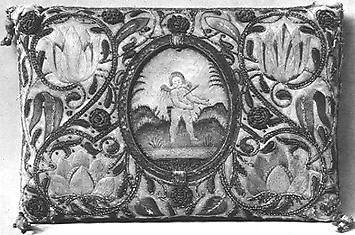
|
|
|
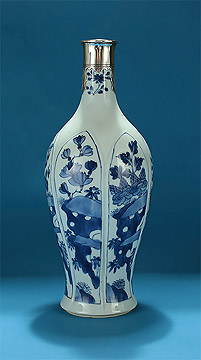
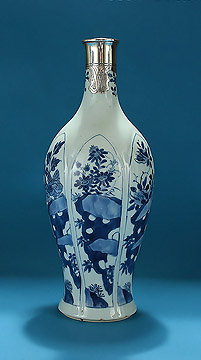
|
|
Kangxi Molded Silver-Mounted Bottle Vase
China, c1690
Each upright molded petal
painted differently
Verso with an artemesia leaf
within concentric circles
The mounts European, 18th century
10.5"
High
|
|
|
English : |
|
|
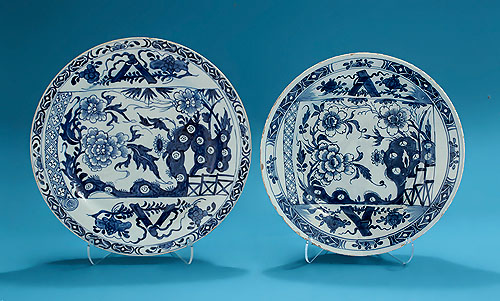 |
|
Bow Scroll Pattern Plate, &
Dublin Delft Scroll Pattern Plate after the Bow
England, c1750-2, & Ireland, c1755-60
The Bow an exact copy of a Chinese
export original;
Bow example exhibited English
Ceramic Circle 1948, with label and reference number 154;
also cited in
Bow Porcelain, Geoffrey Freeman, p.57,
Pl. 67, as "the Toppin example"
Bow influence on Dublin delftwares
discussed Irish Delftware (2000), Francis, pp. 105-6
9.25" & 8.75" Diameter
|
|
|
|
|
|
|
|
THE GLASS : |
|
|
|
|
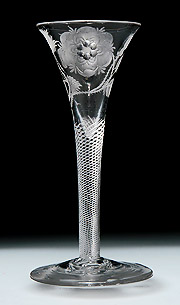
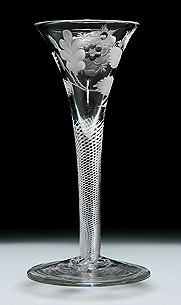 |
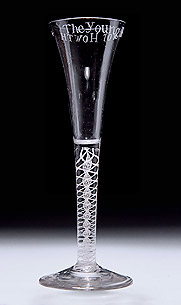  |
|
|
|
George II Jacobite Trumpet Form
Wine
England, c1745
With Stuart Rose and two buds, the
sun and a
white oak leaf
Ref :
The Book of Wine Antiques,
Butler & Walkling:
Also Bonnie Prince
Charlie and the Royal House of Stuart,
Nicholson.
6" High |
Early George III Double Series Opaque Twist
Wine Glass
Irish Interest, England c1765
engraved THE YOUNG ROCKS OF HOWTH
Howth Peninsula forms the northern tip of Dublin Bay.
Its rocks date back 550 million years,
making them the oldest rocks
in Ireland,
with evidence of human
habitation to 3500 BC
/
7.75"High |
|
|
|
|
|
|
|
|
During the 18th century, wine
during meals only accompanied toasts.
The attending footmen would bring
fully charged small glasses to each diner, to be drunk all
at once.
The glass was then returned to the
footman, who would refill it for each toast.
Often a toast elicited
such fervent agreement that very sturdy glasses became
necessary :
the
"firing glass"-
a small glass with a short stem and thick foot - which
guests banged on the table, making
a sound just like
gunfire - hence the name.
After dinner, the more serious
imbibing took place for the gentleman.
The ladies withdrew to the
"withdrawal room" - probably out of self defense -
whilst "manly conversations" of
politics, business - and bawdiness - began.
If William Hogarth's engraving
"A Modern Midnight Conversation" (1732-3) has any
accuracy,
it is a wonder either the
gentlemen - or the glasses - survived!
|
|
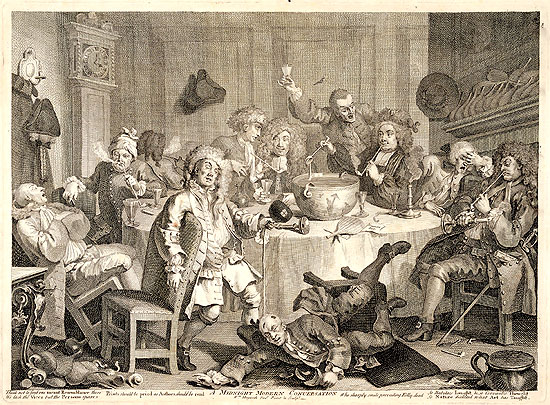 |
|
|
|
|
THE FINE ART : |
|
|
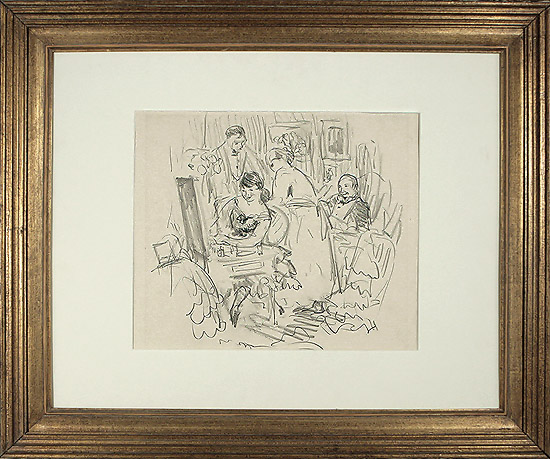
|
|
Robert Cozad Henri, American (NY / PA) 1865-1929
"Final Touches",
"December 25, 1925"
Pencil on Buff Paper, pencil signed
within the drawing,
numbered
twice verso : F . 2 . F-05.61
Image Size : 12"
x 16" / Framed Size : 24" x 28"
The central figure reminiscent in
many ways of Berthe Morisot's portrait of Julie Manet, "Fillette au chat"
 |
|
|
|
|
The
'Annunciation', the 'Birth of Christ' and the 'Journey of
the Magi' have inspired
some of
the most extraordinary art in the history of mankind.
From the
more stoic medieval art to the full blown
renaissance, the examples are rich and myriad.
We have
chosen three works to illustrate this celebrative
Christmas season.
Each is
remarkable in its own way.
What
better could represent "The Gift" than the
remarkable
Mosaic at the Basilica of Sant' Apollinare Nuovo,
Ravenna, Italy.
|
|
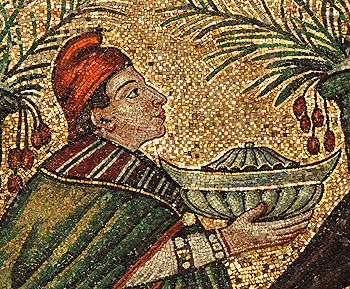 |
|
|
|
The
"Magi" mosaics, completed in 565 AD, are part of the
mosaic panels on the north side of Basilica nave.
They
appear as part of a procession of 22 Virgins moving
toward the Madonna and Child, attended by angels.
The
three Magi are depicted in Persian ("from the
East") clothing, with leopard-print breeches,
capes and Phrygian caps,
gazing upward at a star,
each bringing gifts to the
Christ Child.
They are named
in the mosaic : "Balthassar", "Melchior" and
"Caspar".
This
is thought to be the earliest example of the three
names being assigned to the Magi in Christian art.
Each tiny tile is smaller than
a fingernail. Yet they are as bright and
colorful originally made.
In
1995, UNESCO placed the Basilica on the World
Heritage List, deeming it one of the
"most
important buildings from this period of crucial
cultural significance in European religious heritage
art".
To
view larger representations and a few details on
this mosaic, please click
here or on the images above.
Remember that complimentary shipping (on
items packed in a 16" square box) ends November
30th.
|
|
|
And the best of Christmas and holiday wishes to you,
Millicent Creech
Caroline Harrison
Kelly
Keith Rainer
|
|
|
Please click
below for our other Christmas Catalogs :
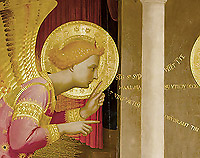
Anticipation :
Advent / Preparation
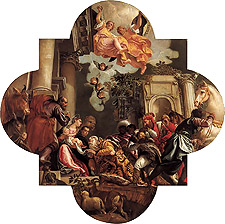
Anticipation : The Celebration
|
|
|
901-761-1163
(gallery) /
901-827-4668
(cell)
581 S.
PERKINS ROAD
/ LAURELWOOD
COLLECTION /
MEMPHIS, TN
38117
Hours :
Wed.-Sat.
11-6, or by
appointment
Complimentary
Gift
Wrapping
mfcreech@bellsouth.net
or
mfordcreech@gmail.com
www.mfordcreech.com
To receive
our periodic
email
catalogs,
please click
here
American Express, Mastercard, Visa and Discover accepted
|
|
|
Home
Accessories
Ceramics
Early Asian Ceramics
Fine Art
Furniture
Glassware
Silver |
|
|
 
© Some images are copyrighted by their authors and used by permission.
They appear here for your enjoyment only.
Please do not reproduce without specific written permission.
Anticipation : The Gift |
|